
Gold is a bright, and rare metallic element that reflects light, even in shadows. Humankind has always treasured gold among the most precious metals. Gold is durable, pliant, and does not oxidize, corrode, tarnish, or rust, making it ideal for jewelry. Acid tests are the only reliable way to determine whether a piece of jewelry is real gold. An acid test compares a real “known” gold item to a questionable one. Acid tests can be performed (very carefully) at home, by a jeweler, or by a laboratory. A jeweler may also be able to tell you where to purchase a gold-testing kit.
A less reliable method of determining whether a necklace is real gold examines the quality inscription or stamping (hallmark). There is more deceptive stamping today than in former times, said David West Nytch, a New York master goldsmith and gemologist. To be absolutely certain if a piece of jewelry is real gold, take it to a reputable jeweler, recommends Nytch. Karats describe the percentage of gold found in an item, and the higher the number, the higher amount of gold. Gold is customarily mixed with copper, silver, zinc, and other metals to harden it and create variations in color. Nytch advises consumers, “If you see flaking or the gold rubs off, be very suspicious. A solid gold piece won’t do that; in a white gold piece, you may see a color differentiation.”
Acid Test #1
Wear rubber gloves and protective clothing before handling nitric acid, which is dangerous and can damage skin and clothing.
Rub the real gold necklace on the slate or unglazed ceramic. It will leave a mark, actually transferring a tiny amount of metal onto the slate or ceramic.
Rub the questionable gold necklace on the slate or ceramic in the same manner as the real gold piece.
Apply a few drops of nitric acid on each of the rubbings.
Compare the reactions and colorings on both marks. If the necklace is real gold, there will be little or no reaction, and the color of the two marks will be similar. If it is not real gold, acid will dissolve the rubbing. Gold with lower quality or karats will leave a darker color compared to coloring from the “known” gold item.
Acid Test #2
Use a small file on the necklace in question.
Find an inconspicuous place to make a small scratch.
Using a toothpick, place a drop of nitric acid on the scratched spot.
Note the reaction. No reaction indicates the necklace is real gold. If there is a milky reaction, the necklace has a layer of gold over silver. If the scratch turns bright green, the necklace is base metal. If the color is a darker green, the necklace is gold-plated with a gold layer over base metal.
Rinse jewelry and gloves well in cool, running water.
HallmarkTest
Find good lighting where you can examine the jewelry.
Inspect the clasp of the necklace to find the hallmark, a tiny inscription or stamping with numerals and the letter K.
Look closely at the hallmark with the magnifier or jeweler's loupe.
Determine the purity of gold from the number of karats on the hallmark.
Use the following guidelines: • 24 K is pure gold • 18K is 75 percent pure gold mixed with one or more other metals • 14K is 58.3 percent gold mixed with other metals • 12K is 50 percent gold mixed with other metals • 10K is 41.7 percent gold mixed with other metals
Related Articles

How to Tell If a Silver Chain Is Real

How to Find Out How Many Carats Are in ...

How to Tell If Coral Jewelry Is Real
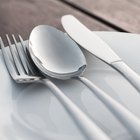
Information on Colloidal Silver Cream ...

How to Remove Gold Plating

How to Clean Sterling & Turquoise ...
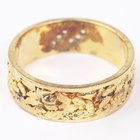
How Can I Test Rose Gold?
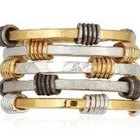
How to Clean Vermeil
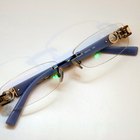
How to Remove Scratches From Eyeglasses ...
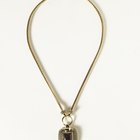
How to Keep Gold Plated Jewelry From ...
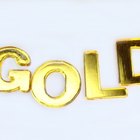
What Is the Difference Between 9K & 14K ...

What Is the Difference in K and KT in ...

How to Read Fine Silver Jewelry Marks ...

How to Tell If It's Gold Filled or ...
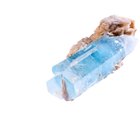
List of the Types of Semi-Precious ...
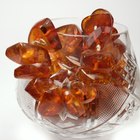
What Is Cognac Amber?

Cubic Zirconia Vs. White Spinel
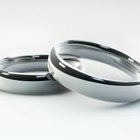
The Difference in Tungsten Carbide and ...

Jewelry & Skin Discoloration

How to Spot a Fake BB Simon
References
Writer Bio
Cheryl A. Beller has worked as a journalist in Michigan since 1976. Her articles and newspaper columns have appeared in "The Grand Rapids Press," "The Daily Tribune," "Advance Newspapers," and numerous other publications. She has won awards from United Press International and the Michigan Press Association. Beller holds a Bachelor of General Studies degree with majors in journalism and English from the University of Michigan.
Photo Credits
gold chain image by saied shahinkiya from Fotolia.com